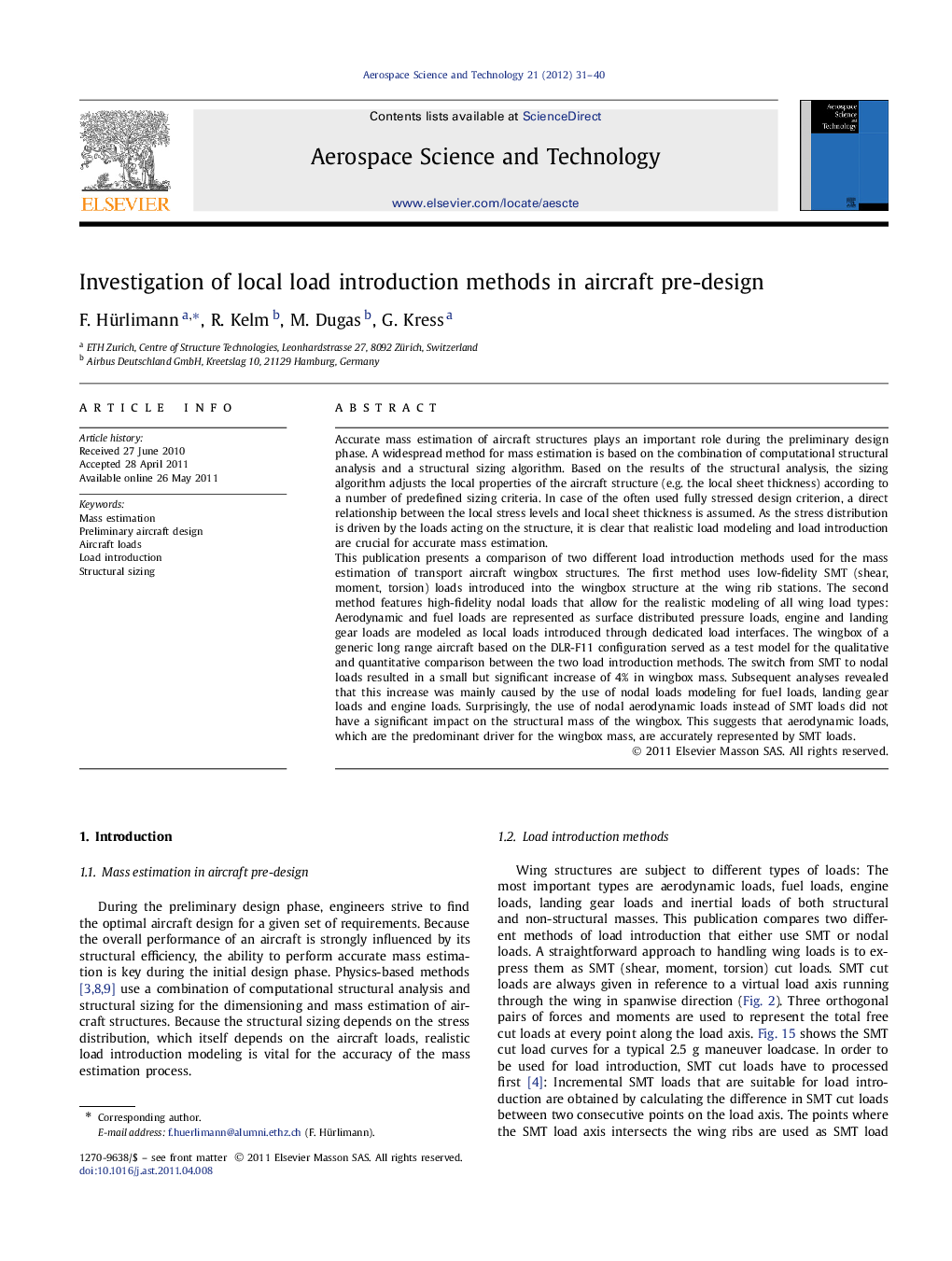| Article ID | Journal | Published Year | Pages | File Type |
|---|---|---|---|---|
| 1718440 | Aerospace Science and Technology | 2012 | 10 Pages |
Accurate mass estimation of aircraft structures plays an important role during the preliminary design phase. A widespread method for mass estimation is based on the combination of computational structural analysis and a structural sizing algorithm. Based on the results of the structural analysis, the sizing algorithm adjusts the local properties of the aircraft structure (e.g. the local sheet thickness) according to a number of predefined sizing criteria. In case of the often used fully stressed design criterion, a direct relationship between the local stress levels and local sheet thickness is assumed. As the stress distribution is driven by the loads acting on the structure, it is clear that realistic load modeling and load introduction are crucial for accurate mass estimation.This publication presents a comparison of two different load introduction methods used for the mass estimation of transport aircraft wingbox structures. The first method uses low-fidelity SMT (shear, moment, torsion) loads introduced into the wingbox structure at the wing rib stations. The second method features high-fidelity nodal loads that allow for the realistic modeling of all wing load types: Aerodynamic and fuel loads are represented as surface distributed pressure loads, engine and landing gear loads are modeled as local loads introduced through dedicated load interfaces. The wingbox of a generic long range aircraft based on the DLR-F11 configuration served as a test model for the qualitative and quantitative comparison between the two load introduction methods. The switch from SMT to nodal loads resulted in a small but significant increase of 4% in wingbox mass. Subsequent analyses revealed that this increase was mainly caused by the use of nodal loads modeling for fuel loads, landing gear loads and engine loads. Surprisingly, the use of nodal aerodynamic loads instead of SMT loads did not have a significant impact on the structural mass of the wingbox. This suggests that aerodynamic loads, which are the predominant driver for the wingbox mass, are accurately represented by SMT loads.
